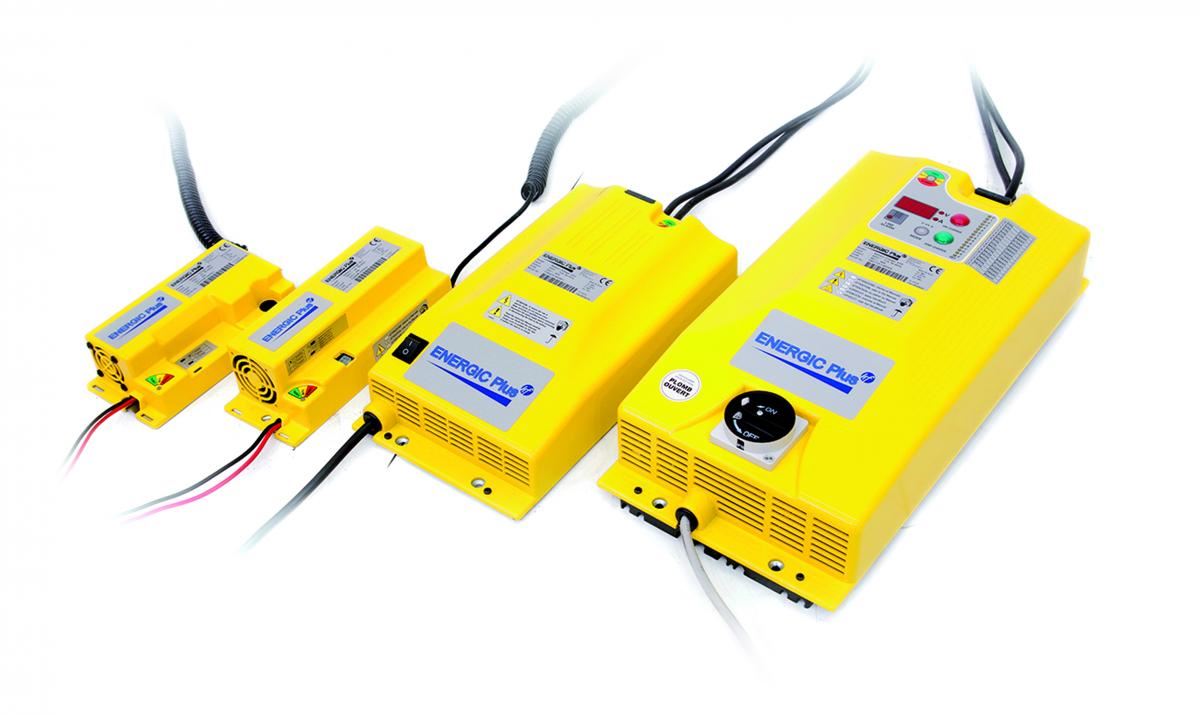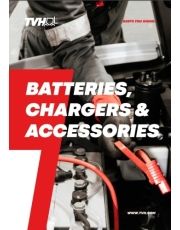Why a high-frequency charger is your best choice
The development of the first rechargeable lead-acid battery by Gaston Planté in 1859 was a major step for the battery world.
His first model consisted of a spiral roll of two sheets of pure lead separated by a linen cloth, immersed in a glass jar of diluted sulphuric acid. As a result of repeated charging and discharging, he obtained a certain capacity. This principle was further improved in the course of the following years, and finally resulted in the battery we see installed in our machines these days. Nowadays, this battery has numerous applications, also in the material handling industry. The fact is that more and more machines with internal combustion engines are replaced by electric models, and these are powered by - you guessed it - rechargeable batteries.
Charging batteries properly
It is obvious that an empty rechargeable battery must be recharged, but this must be done with the most appropriate charger. Charging properly means that the battery will regain the correct amount of energy in the available time. People who have 8 hours available, will have to add more energy to the battery than someone who can let the battery charge for 12 hours. As a rule, the intensity of the charge and discharge currents strongly influence the life span of the battery. The higher the currents, the warmer the battery gets, which can have a detrimental effect on the battery. To prevent this, you need the right charger.
Will you opt for a low- or high-frequency charger?
Everybody surely knows the low-frequency chargers, also known as conventional chargers. These chargers can be recognised by their bulky size and corresponding weight. Despite being well-known, these chargers are also highly outdated. They generate a lot of heat and loose up to 30% of their capacity as a result of this heat development. Furthermore, they are far from cost-effective. On average, they only charge your battery for approx 70%, which isn't really efficient.
The high-frequency chargers are lighter, more compact and a lot more efficient (87%!). These chargers consume a lot less, resulting in lower costs in the long term. So your best choice is undoubtedly a high-frequency charger! These chargers work with average lower and better tuned charge currents than the conventional versions. In addition, they are able to precisely select the correct setting for the battery at that specific moment. Another advantage is that they consume considerably less energy and don't have a high inrush surge current. Low-frequency chargers use more energy when they are switched on, causing costs to increase quickly.
That is why working with high-frequency chargers offers numerous benefits:
- maximum energy saving
- longer life span of your battery
- reduced heat generation in the battery
- lower water consumption
- low weight and limited height
Basically, you save a lot of energy and money by opting for a high-frequency charger!

Calculate your benefits!
Are you curious about the exact amount you save by using a high-frequency charger instead of a conventional unit? Via the efficiency calculator on the Energic Plus website, you can easily calculate the amount you save. Fill in all fields and you can immediately see what you save on an annual basis. Calculate your benefit now!
Charlotte, TVH blogger

